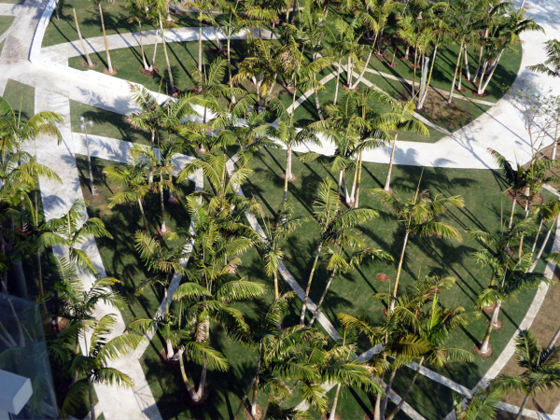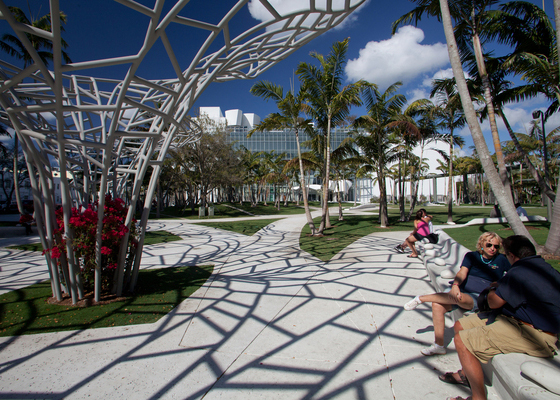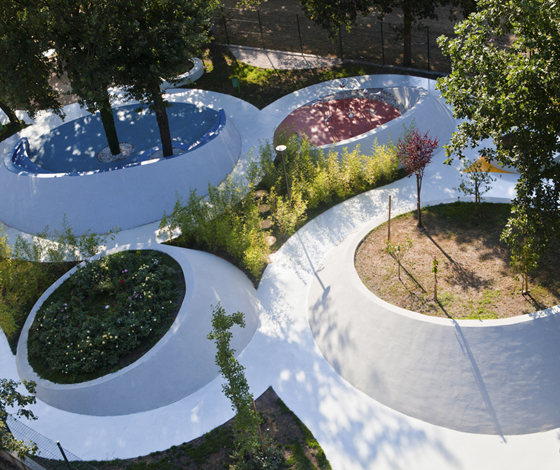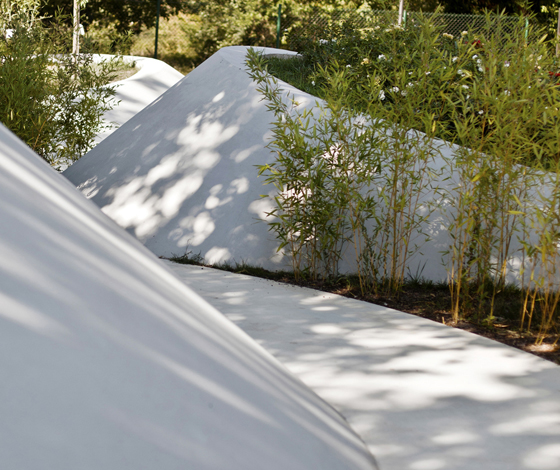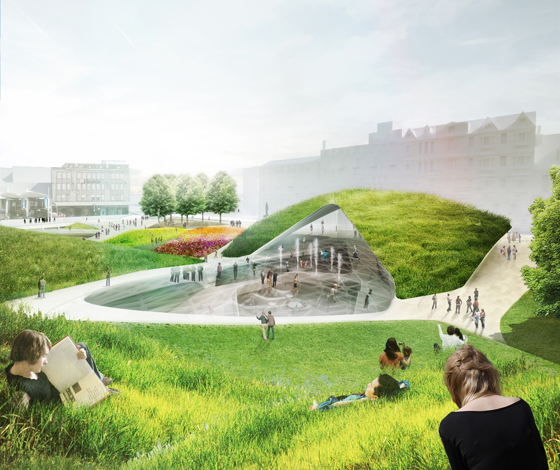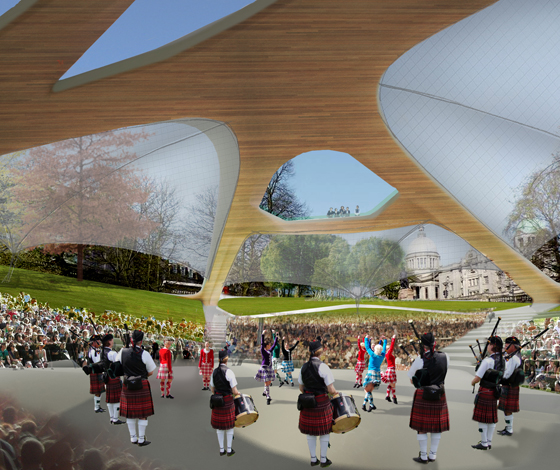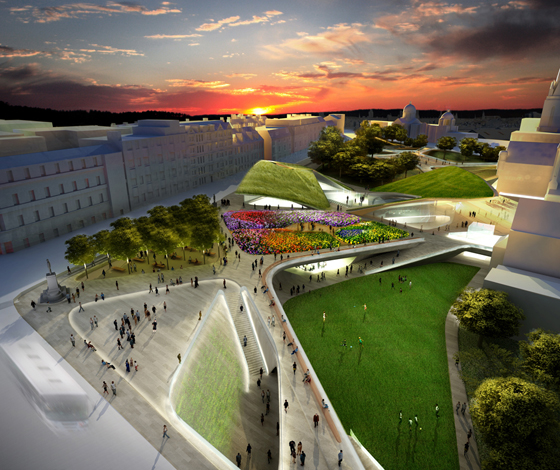Park life: the evolving approach to designing urban public space
Text by Alyn Griffiths
London, United Kingdom
10.05.12
It could be argued that the pinnacle of urban landscape architecture was reached in seventeenth century France and the French formal gardens or in Britain's philantrophic Victorian public parks in the ninenteenth century. Contemporary urban architects and designers are rarely afforded the same amount of space, money and time as their antecedents. Here, Architonic looks at some recent successes that add value to their surroundings by pushing the boundaries of park design.
The High Line section 3 – 10th Avenue spur James Corner Field Operations and Diller Scofidio + Renfro. 2012 Courtesy City of New York and Friends of the High Line
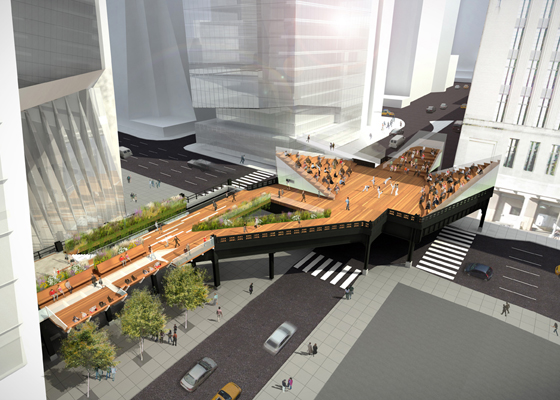
The High Line section 3 – 10th Avenue spur James Corner Field Operations and Diller Scofidio + Renfro. 2012 Courtesy City of New York and Friends of the High Line
×Finding new spaces in towns and cities that can be turned into communal parks is extremely difficult with every available plot in such high demand and so, as with many other aspects of urban development, the reuse or re-appropriation of existing land has become a popular alternative. The shining example of this practice is New York’s hugely popular High Line development, which has converted a disused freight rail line elevated above the streets of Manhattan into a popular park and walkway. Designs were recently unveiled for the third and final section of the High Line, which will wrap around the Hudson Yards, an active train yard for Long Island Rail Road.
The High Line section 3 – 30th Street passage James Corner Field Operations and Diller Scofidio + Renfro. 2012 Courtesy City of New York and Friends of the High Line

The High Line section 3 – 30th Street passage James Corner Field Operations and Diller Scofidio + Renfro. 2012 Courtesy City of New York and Friends of the High Line
×Landscape architects James Corner Field Operations and architects Diller Scofidio + Renfro have created an environment that defies conventional perceptions of parks as open spaces and instead acts as a promenade, winding between buildings and offering views over the rooftops of the meatpacking district and towards the Hudson River.
The High Line section 3 – Children's play beams James Corner Field Operations and Diller Scofidio + Renfro. 2012 Courtesy City of New York and Friends of the High Line
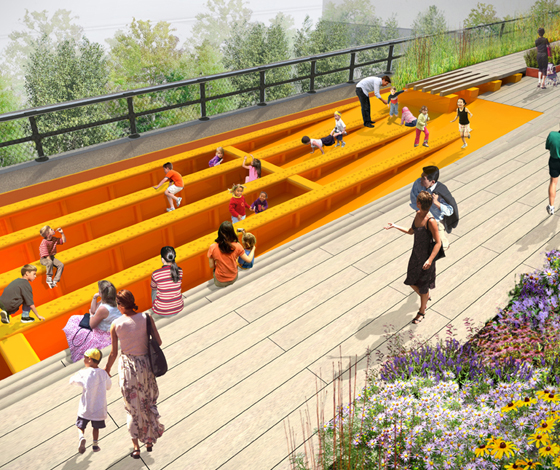
The High Line section 3 – Children's play beams James Corner Field Operations and Diller Scofidio + Renfro. 2012 Courtesy City of New York and Friends of the High Line
×Their collaboration with planting designer Piet Oudolf on the initial two sections of the High Line resulted in a variety of environments along the rail line’s route, ranging from areas of grassland to sun decks with landscaped water features and a raised walkway that lifts visitors into the canopy of trees planted on the bed of the structure below.
The High Line section 3 – Interim walkway at the Western Rail Yards James Corner Field Operations and Diller Scofidio + Renfro. 2012 Courtesy City of New York and Friends of the High Line

The High Line section 3 – Interim walkway at the Western Rail Yards James Corner Field Operations and Diller Scofidio + Renfro. 2012 Courtesy City of New York and Friends of the High Line
×The proposal for Section 3 has been carefully coordinated with an ongoing development of the Hudson Yards, which will ultimately host more than 12 million square feet of offices, residential, retail and cultural venues. The design includes a public plaza where the park crosses 11th Avenue at West 30th Street, with large planted beds interspersed with areas of seating and a play area for kids created by covering the original structural beams and girders with a thick and colourful rubber coating. The final section of the High Line is due to open in early 2014 and will complete the most ambitious and significant urban park of the 21st Century.
Another example of an initiative to transform a disused inner city site into a public park is the Paddington Reservoir Gardens in Sydney, Australia by Tonkin Zulaikha Greer Architects and JMD landscape design. The gardens occupy the site of a late 19th century reservoir, whose underground chambers once held part of the city’s water supply. Having fallen into a state of disrepair, the City of Sydney designated the site, in the heart of the vibrant commercial district of Paddington to be used as a public park.
Paddington Reservoir Gardens Tonkin Zulaikha Greer Completed 2006-2009 Photographer: Brett Boardman

Paddington Reservoir Gardens Tonkin Zulaikha Greer Completed 2006-2009 Photographer: Brett Boardman
×Instead of covering over the ruins of the original building, the architects chose to highlight the beauty of the decaying structure by planting the remaining roofed area and inserting a raised precast concrete boardwalk around the perimeter. The boardwalk provides access to the sunken garden and pond in the conserved ruin of the reservoir’s western chamber, while the roof and timber columns of the eastern chamber have been stabilised so it can act as an indoor events venue.
At the busy street level the roof of the eastern chamber is covered in a simple lawn and a canopy made from a grid of aluminium panels that references the vaulted brick ceilings of the water chambers provides dappled shade. Visitors can look down on the lushly planted subtropical plants that thrive in the reservoir’s microclimate before descending to stroll along walkways between the plants, ponds, grassed areas and terraces. The transformation of the Paddington Reservoir provides a tranquil haven in the midst of a bustling metropolitan area that intelligently blends old with new, retaining the character of the original building but bringing it back to life in a new and attractive guise.
Landhausplatz LAAC Architekten and Stiefel Kramer Architecture 2011 Photographer: Günter Richard Wett

Landhausplatz LAAC Architekten and Stiefel Kramer Architecture 2011 Photographer: Günter Richard Wett
×City centre squares often suffer from a lack of design integrity; the resulting expanses of paving or concrete creating a no man’s land across which commuters dash and tourists amble. Eduard-Wallnöfer-Platz in the Austrian city of Innsbruck was one such space until a redevelopment by LAAC Architects and Stiefel Kramer Architects transformed it into a multipurpose public environment with a unique personality.
Landhausplatz LAAC Architekten and Stiefel Kramer Architecture 2011 Photographer: Günter Richard Wett
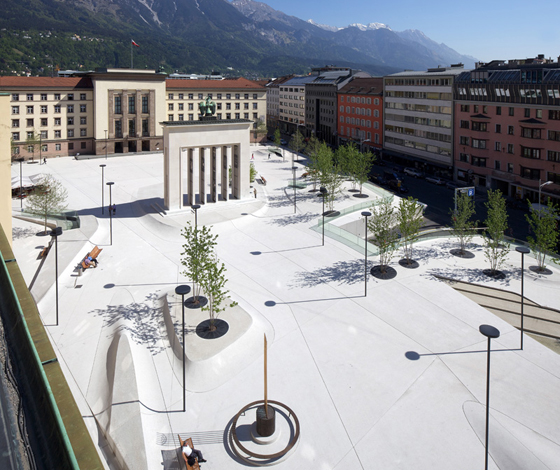
Landhausplatz LAAC Architekten and Stiefel Kramer Architecture 2011 Photographer: Günter Richard Wett
×The architects combined form, texture and planting to redefine the character of the site, which had previously been dominated by the stark facade of the local government headquarters and a large memorial commemorating the region’s liberation from National Socialism. Huge concrete slabs cast in-situ in smooth organic forms rise up in places to provide seating and create an undulating topography that helps direct visitors towards the four sculptural memorials that are spread around the square.
Landhausplatz LAAC Architekten and Stiefel Kramer Architecture 2011 Photographer: Günter Richard Wett

Landhausplatz LAAC Architekten and Stiefel Kramer Architecture 2011 Photographer: Günter Richard Wett
×Trees provide the only greenery in the unashamedly man-made landscape, although the introduction of water in a stepped fountain at the base of one of the monuments adds another natural element. The extensive use of concrete is offset by the addition of the soft, curving forms and textural variation on some surfaces, which have been polished to a smooth, terrazzo-like finish or left raw and rough. Attractive street furniture and the physical and practical delineation of the space also help it avoid appearing sterile and uninviting; instead it becomes a public square with soft edges.
Miami Beach SoundScape West 8 2011 © Robin Hill for West 8
The overuse of concrete in urban squares is something that Dutch landscape architects West 8 attempted to avoid with their winning proposal for Lincoln Park in Miami Beach, which they deliberately describe as “a green park, not a plaza.” Situated on a site just over 1 hectare in size next to Frank Gehry’s New World Centre, the Miami Beach SoundScape supports a range of daytime and nighttime activities and include a projection setup that displays concerts and video art on the 700 square metre facade of the Symphony Hall.
Miami Beach SoundScape West 8 2011 © Robin Hill for West 8
During the day, visitors can relax on lush grass, shaded by palm trees and hand-fabricated aluminium pergolas that cast veined shadows and support bougainvillea vines, whose blossoms inject colour at the entrances to the park. A tower housing projection equipment is formed of the same material as the pergolas, while the pathways and raised seating are made from simple white concrete, so there is little to distract from the green grass and foliage and the blue South Florida sky.
The park’s small size is compensated by the careful planting of palms and other greenery that helps to screen views in certain directions before opening out in other areas, creating differentiated sheltered or expansive spaces. Meandering paths of differing widths offer a choice of routes through the undulating topography, further enhancing the contrast between seclusion and public interaction.
Communal spaces have always played an important role in the fabric of urban life; particularly in areas of high density housing, where they act as a focal point for the community. The neighbourhood of Corso Lazio in the city of Frisonone, Italy was severely lacking in the sort of public areas and infrastructure needed for such a populated area until Nabito Architects took responsibility for designing a masterplan to help fill this social void and create spaces where people could enjoy being outdoors.
The Sensational Garden is a 2,000 square metre park with interconnected pathways winding between concrete elements that divide the spaces and offer different experiences. In a direct response to the monotony of the surrounding housing scheme, the garden aims to stimulate visitors’ senses through playful interventions, including tactile materials, sound amplifiers, heavily scented plants and flowers and trees bearing sweet fruits.
This space demonstrates how man-made materials can be used to supplement and enhance the natural properties of plants and trees to provide the sort of sensual experiences that are generally lacking within urban environments. The community of Corso Lazio now has a public space to be proud of, which the architects hope will help to regenerate social interaction within the neighbourhood.
In many cities, parks and gardens that were part of the original urban plan have become outdated or dilapidated as their surroundings have evolved. Fresh thinking is required to make these locations relevant to contemporary urban life; something that Diller Scofidio + Renfro hope their winning competition entry for the Union Terrace Gardens in the Scottish city of Aberdeen will achieve. Working with Scottish architects, Keppie Design and landscape architects Olin Studio, DS+R’s proposal aims to transform the city centre Victorian park into a multipurpose venue hosting eight different gardens, a cultural and arts centre, café and two new plazas.
Aberdeen City Garden Diller Scofidio + Renfro 2012 © Diller Scofidio + Renfro
The design has been labelled the ‘Granite Web’ and involves redefining the topography of the site, stretching the park over a dual carriageway and railway lines that run along one side and removing the steep banking terraces that currently reduce accessibility. Turf-covered hillocks and surfaces that lift off from the ground increase the amount of usable garden space are connected by interlacing pathways that soar over event spaces and indoor facilities. A flower meadow, wooded areas and plenty of grass maintain the park’s pastoral character but the sheltered forum and arts centre ensure that twenty-first-century needs are catered for and mean the park could function as a source of income for the city as well as a relaxing and recreational retreat for its residents.
Aberdeen City Garden Diller Scofidio + Renfro 2012 © Diller Scofidio + Renfro
Successful urban parks respond directly to their surroundings by employing appropriate materials and architectural styles to weave themselves seamlessly into the existing urban fabric. They must also satisfy the needs of the people who will use them on a daily basis, offering shelter from the sun or rain, spaces to gather or to be alone and facilities to enable them to relax, play, eat and be entertained or simply watch the world go by. With land in city centres so hard to come by, only landscape architecture that supports multiple functionalities in imaginative, ambitious and responsible ways will be afforded the space to flourish.
Aberdeen City Garden Diller Scofidio + Renfro 2012 © Diller Scofidio + Renfro








